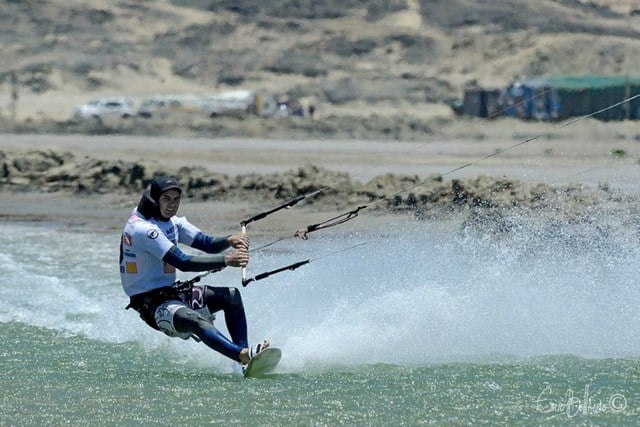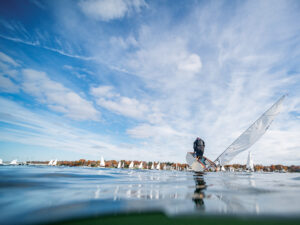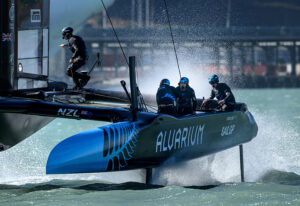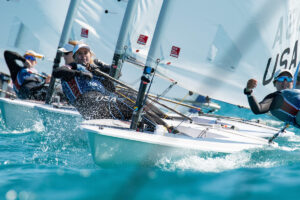
Luderitz Speed Sailing Challenge
It’s Luderitz time! That’s the time of the year when kiteboarders and windsurfers gather at a custom-built speed trench down in Namibia, and use the howling winds to try and propel themselves to world record speeds.
Watching the drama of humans hurtling down a narrow, shallow canal at potentially bone-breaking velocity, against a wild African backdrop, is always compelling. And it makes for some great media (even if it is possible to go overboard with the self-important narration):
More important, Luderitz has delivered. In 2010, kiteboarders Sebastien Cattalan, and then Rob Douglas, pushed the outright sailing speed record to 55.65 knots. That same year kiter Charlotte Consorti took the women’s outright record to 50.43 knots. And Luderitz can be found all over any list of windsurfing and national speed sailing records.
This year, though, when I started to see news of Luderitz flashing across Facebook and Twitter, I didn’t feel the usual surge of interest and enthusiasm. That was strange, but when I thought about it I realized the explanation was pretty simple: In the past year the world of high-speed sailing has been revolutionized, and that has pushed Luderitz a bit back into the shadows.
The first quantum shift took place last November, just a few hundred miles north of Luderitz, at Walvis Bay. That is where Paul Larsen, and his Vestas Sailrocket team, after more than a decade of tinkering with their oddball craft managed to pull off a mindblowing speed run, besting Douglas’s kite-driven speed record by almost a full 10 knots. In the history of speed sailing, new records have trickled in incrementally, a few knots at a time. Larsen and SailRocket rewrote reality by absolutely obliterating the existing record by almost a full 10 knots, which equates to a ridiculous 17.6 percent jump.
********It doesn’t get any more epic than that. But it changes the context of Luderitz. Thanks to SailRocket, the 100-knot barrier is now the new Big Hairy Audacious Goal (BHAG), leaving the old 50-knot BHAG (achieved for the first time just 5 years ago) to fast dimming history. Suddenly, a bunch of kiters and windsurfers playing around in the 50s (amazing athletes and sailors that they are) doesn’t seem so exciting.
Surprisingly, the America’s Cup, I think, was the second revolution that has taken some of the thrill from Luderitz. First off, if an America’s Cup “yacht,” while match racing, can hit speeds close to 50 knots, then kiting better move past the 60-knot barrier pretty fast if it wants to maintain any street cred at all. Throw in the fact that the AC72s were foiling, and standard kiting looks even more conventional.
So what will it take to elevate Luderitz back into the thrill mix? In a word, foils. It’s unlikely we will see foiling cruising sailboats anytime soon. Interestingly, though, the trickledown impact of the America’s Cup has already invaded the kitesurfing world.
**
**Of course, messing around with foils on kiteboards preceded the America’s Cup. But the America’s Cup (thank you, Larry and Russell) has turbo-charged the idea of racing on foils. That also makes Luderitz look a little vintage, because any speed platform that doesn’t suddenly lift out of the water seems almost disappointing. But it also represents the future because foiling kiters at Luderitz, pushing to go 60-plus knots and threatening the outright record again, is something I definitely would love to see.









